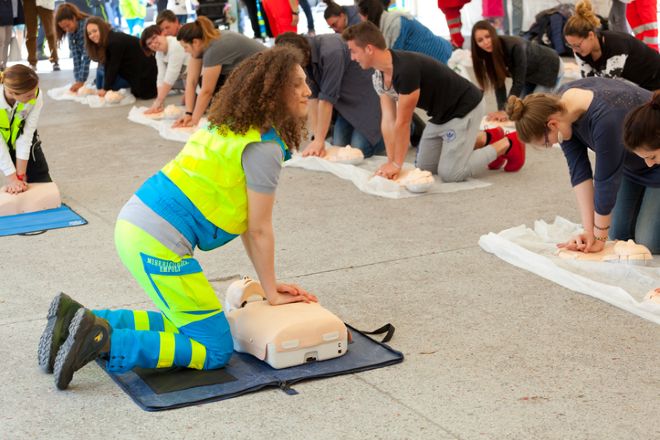“School safety is an education issue that happens to involve safety and security. It’s not a law enforcement issue that happens to take place in school,” said Amanda Klinger, director of operations and co-founder of The Educator’s School Safety Network, in a recent NBOA webinar. Educators need to be deeply involved in school safety because they are in the best position to help students and influence the culture of the school, she explained with co-founder Amy Klinger (her mother) during their presentation.
We’re beginning to see teachers that say flat out, "I won’t do it. I won’t participate. I don’t want that experience [of realistic active shooter training]."
Amy Klinger
The Educator's School Safety Network
The Klingers worry that many active-shooter trainings in schools today intimidate and scare school communities more than they prepare them to respond. “We’re beginning to see teachers that say flat out, ‘I won’t do it. I won’t participate. I don’t want that experience,” said the Klingers. Students too, including elementary school students, have been traumatized from training that some say is overly realistic.
Schools can empower community members by training not just top administrators but the whole staff in school safety procedures and by extending training beyond what often works out to half a day’s professional development. “School safety should be part of our daily operating procedure, not something we do every once in a while,” said the Klingers.
Threat assessment, where stakeholders identify individuals of concern before a crisis happens, is one important way to involve faculty and other staff members. A multidisciplinary threat team assesses individuals who are not only at risk of violence to others, but also themselves. “You probably don’t have a student who is contemplating a school shooting…[but] you probably have a student who is at risk for self-harm or risk-taking behaviors,” the Klingers explained.
Student disclosures, when students tell an adult on campus that they are worried about a peer’s behavior, are an effective way to gather relevant information. Disclosure is “much more effective than surveilling kids,” said the Klingers. And while an anonymous tip line is a start, it is unlikely to be used by a student worried about the depressive behavior of his or her best friend, she explained.
Avoid “mall cop” security, in which those in charge of supervision remain at a distance until intervention is absolutely necessary.
How can staff and faculty build that trust and be available to students? Start by being present when in open places in the school, the Klingers explained. When in hallways or the cafeteria, for example, faculty and staff shouldn’t be chatting with each other, which discourages students from approaching, but rather engaging with and observing students. Avoid “mall cop” security, in which those in charge of supervision remain at a distance until intervention is absolutely necessary.
An outside security company will likely find it more difficult to build relationships and trust with students, which is one reason why the Klingers caution against the use of third-party security providers. Even a robust in-house team can be “a blessing that almost becomes a curse because everyone who works at the school starts to think, ‘This is not my problem.’” If an unregistered visitor is walking the hallways, a teacher might be less likely to confront them, for example. Teachers may receive less training and be less prepared in an emergency if they assume that security is another person’s job.
To learn more about visitor engagement, bringing law enforcement onto campus, handling bomb threats, crisis communication and more, visit the webinar archive for a webinar recording, slides and transcript.



